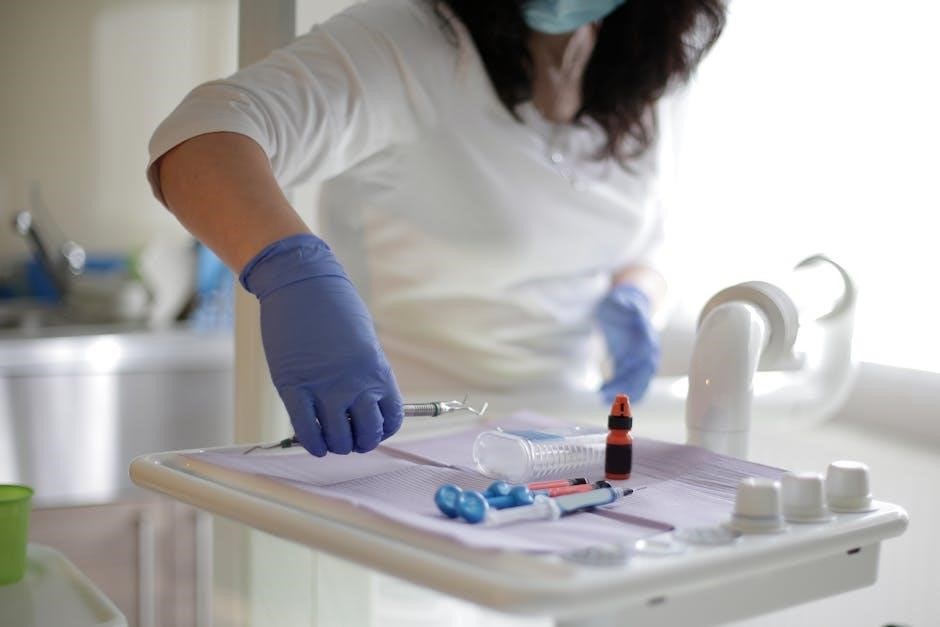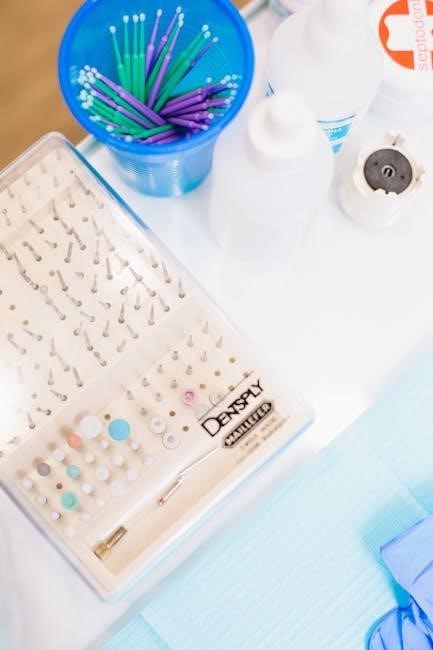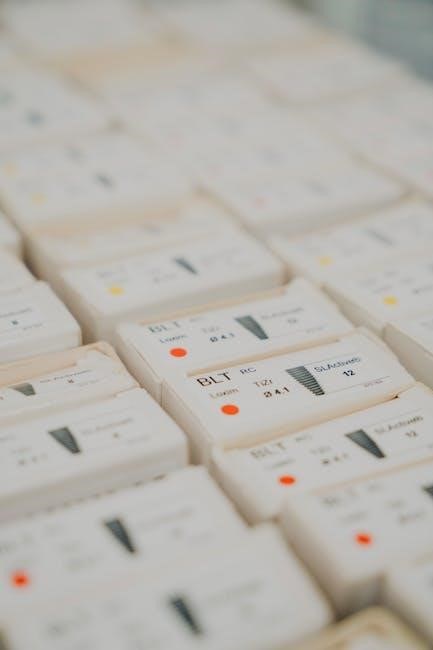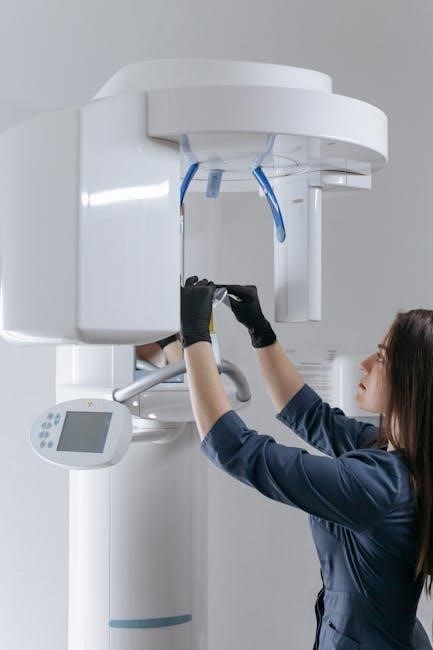Dental Instruments: Pictures and Names (PDF Guide)
Dental instruments and their corresponding names can significantly ease patient anxiety․ This guide will provide both visual representations and descriptions of common dental instrument names․ A PDF version will offer an accessible overview, reducing apprehension in the clinic․
Dental instruments are the specialized tools utilized by dental professionals for the examination, restoration, and extraction of teeth and surrounding structures․ Recognizing dental instruments and understanding their functions can alleviate patient anxiety․ Many dental instruments are multi-functional, often having more than one name․ These will be listed where possible․
This guide aims to provide a comprehensive overview of essential dental instruments, complete with pictures and names in PDF format․ From basic examination tools to specialized surgical instruments, each item plays a crucial role in dental procedures․ Understanding their purpose empowers patients and enhances communication with dental professionals․
This resource will showcase a range of instruments, including those used in hygiene, implant dentistry, and dental X-rays․ The importance of sterilization will be highlighted to ensure patient safety․ The PDF guide will serve as a valuable reference, demystifying the world of dental equipment and promoting a better understanding of dental care․ By familiarizing yourself with these tools, you can approach your next dental appointment with confidence․
Basic Dental Examination Instruments
The foundation of any dental appointment begins with a thorough examination․ Several key instruments are essential for this process, allowing the dentist to accurately assess your oral health․ These basic instruments, while simple in design, are vital for diagnosis and treatment planning․ The core examination kit typically includes a mirror, probe, and tweezers․
The dental mirror, often with a concave surface for slight magnification, provides enhanced visibility in hard-to-reach areas of the mouth․ The explorer, a sharp-pointed instrument, helps detect cavities or irregularities on tooth surfaces․ Tweezers, also known as cotton forceps, are used to grasp and transfer materials, such as cotton rolls, during the examination․

A periodontal probe is also frequently used to measure the depth of the gingival sulcus, the space between the tooth and gums․ This helps assess gum health and identify potential periodontal disease․ Understanding the function of these instruments can reduce patient anxiety and promote a better understanding of the examination process․ Each instrument plays a crucial role in allowing the dentist to provide accurate and comprehensive care․ This section with pictures and names in PDF format, will help you recognize these tools․
Instruments for Amalgam Manipulation
When restoring teeth with amalgam, a specific set of instruments is required for proper manipulation and placement․ These instruments are designed to efficiently mix, carry, condense, carve, and polish the amalgam material․ Understanding the function of each instrument is crucial for achieving a successful and long-lasting restoration․ One essential instrument is the amalgam carrier, used to transport the mixed amalgam from the mixing well to the prepared cavity․
Amalgam condensers, also known as pluggers, are then used to pack the amalgam tightly into the cavity preparation․ These come in various sizes and shapes to adapt to different cavity forms․ Carvers, such as discoid-cleoid carvers, are used to sculpt the amalgam to the correct anatomical contours of the tooth․ Burnishers are then used to smooth and refine the surface of the restoration․
Finally, polishing points and cups are employed to achieve a smooth, lustrous finish, enhancing aesthetics and reducing corrosion․ Proper technique and knowledge of these instruments are essential for creating durable and functional amalgam restorations․ This section, with pictures and names in PDF format, will help recognize these tools used in amalgam procedures․ This ensures optimal patient care and successful treatment outcomes․
Hygiene Instruments
Maintaining optimal oral health requires a range of specialized hygiene instruments designed for cleaning and preventing dental diseases․ These instruments are essential for removing plaque, calculus, and stains from tooth surfaces, ensuring healthy gums and preventing periodontal issues․ Scalers are fundamental instruments, available in various shapes and sizes, used to scrape off calculus from the teeth․ Curettes, such as Gracey curettes, are specifically designed to remove subgingival calculus, reaching below the gum line to clean the root surfaces․

Probes, including periodontal probes, are used to measure the depth of gingival pockets, helping to assess the health of the gums and identify potential areas of concern․ Explorers are fine, pointed instruments used to detect irregularities on the tooth surface, such as cavities or rough spots where plaque accumulates․ Polishing cups and brushes, along with prophylactic paste, are used to remove stains and polish the teeth after scaling, leaving a smooth and clean surface․
Air-water syringes are also vital for rinsing and drying the teeth during the cleaning process․ Understanding the function and proper use of these instruments is crucial for dental hygienists and dentists․ A comprehensive guide with pictures and names in PDF format can provide valuable reference, aiding in effective and efficient dental hygiene practices․ This ensures patients receive the best possible care for their oral health․
Instruments Used in Implant Dentistry
Implant dentistry requires a specialized set of instruments to ensure precise and successful placement of dental implants․ These instruments range from surgical tools for preparing the implant site to devices for placing and securing the implant․ Bone mills are used to grind bone into smaller particles for grafting, enhancing bone density at the implant site․ Titanium mesh is often employed to support bone grafts and maintain space for new bone formation․
Drills and burs of various sizes and shapes are essential for creating the precise osteotomy (hole) in the jawbone to receive the implant․ Torque wrenches are used to tighten the implant fixture to the correct torque value, ensuring stability without over-tightening․ Implant carriers are used to transport the implant from its sterile packaging to the osteotomy site, maintaining sterility throughout the process․
Surgical guides, often created using digital imaging and CAD/CAM technology, assist in the accurate placement of implants according to the treatment plan․ Suturing instruments, including needle holders and sutures, are used to close the surgical site after implant placement․ A detailed PDF guide with pictures and names of these instruments is invaluable for dental professionals involved in implant dentistry․ This resource aids in proper identification and use, leading to improved surgical outcomes and patient satisfaction․
Surgical Instruments in Dentistry
Surgical instruments in dentistry are essential for a variety of procedures, ranging from extractions to periodontal surgery․ These tools must be of the highest quality and meticulously sterilized to prevent infection and ensure patient safety․ Scalpels with disposable blades are used for making precise incisions in the soft tissues․ Elevators are employed to loosen teeth from their sockets prior to extraction, minimizing trauma to the surrounding bone․
Forceps, available in various shapes and sizes, are designed to grasp and remove teeth efficiently․ Curettes, such as periapical surgical curettes and bone curettes, are used to remove diseased tissue or debris from the surgical site․ Rongeurs are used to trim and shape bone, creating a smooth surface․ Needle holders are essential for suturing incisions, allowing for precise placement of sutures to promote healing․
Periosteal elevators are used to reflect and retract the periosteum, providing access to the underlying bone․ Bone files are used to smooth rough edges of bone after extraction or other surgical procedures․ A comprehensive PDF guide with pictures and names of these surgical instruments is crucial for dental students and practitioners․ This resource aids in proper identification, usage techniques, and maintenance, ultimately contributing to successful surgical outcomes and improved patient care;
Instruments for Dental X-rays
Instruments for dental X-rays are crucial for diagnostic imaging in dentistry․ These tools facilitate the capture of radiographs, which are essential for detecting various dental conditions not visible during a standard clinical examination․ Digital sensors, connected to a computer, replace traditional film, providing instant images with reduced radiation exposure․
Film holders, designed to secure X-ray film in the correct position, ensure accurate and consistent image capture․ Positioning devices, such as Rinn XCP instruments, aid in aligning the X-ray tube head, film, and teeth, minimizing distortion and maximizing diagnostic quality․ Lead aprons and thyroid collars are used to protect patients from unnecessary radiation exposure during the procedure․

Image receptors, whether digital sensors or film, capture the X-ray beam after it passes through the teeth and surrounding structures․ Processing equipment, necessary for developing traditional X-ray film, transforms the latent image into a visible radiograph․ A detailed PDF guide showcasing pictures and names of these instruments is invaluable for dental professionals․ This resource enhances understanding of each instrument’s function, proper usage, and maintenance, leading to improved diagnostic accuracy and patient safety in dental radiography․
Importance of Sterilization of Dental Instruments
The sterilization of dental instruments is paramount in preventing the transmission of infections between patients and dental professionals․ Due to their invasive nature, these instruments come into contact with blood, saliva, and other bodily fluids, potentially harboring harmful microorganisms․ Proper sterilization protocols eliminate bacteria, viruses, and fungi, ensuring a safe clinical environment․
Autoclaving, a common sterilization method, uses high-pressure steam to kill microorganisms․ Chemical sterilization, employing potent disinfectants, is an alternative for heat-sensitive instruments․ Thorough cleaning before sterilization removes debris that can hinder the process․ Regular monitoring of sterilization equipment ensures its effectiveness․
Maintaining a sterile field during dental procedures is crucial․ Packaged instruments should remain sealed until use․ Proper handling and storage of sterilized instruments prevent recontamination․ Dental clinics must adhere to strict infection control guidelines and regularly train staff on sterilization procedures․ A comprehensive PDF guide detailing sterilization protocols, including pictures and names of relevant equipment, is an essential resource․ This guide promotes consistent adherence to best practices, safeguarding the health and well-being of both patients and dental personnel, and reinforcing the importance of infection control in dentistry․
Dental Instrument Materials
The selection of appropriate materials is crucial in the manufacturing of dental instruments, influencing their durability, functionality, and sterilization capabilities․ Martensitic stainless steel is commonly used due to its strength, corrosion resistance, and ability to be heat-treated for enhanced hardness․ This material withstands repeated sterilization cycles without degradation․

Other materials include carbon steel, often used for cutting instruments requiring sharp edges․ However, carbon steel is prone to corrosion and requires careful maintenance․ Titanium and titanium alloys are employed for implant-related instruments due to their biocompatibility and osseointegration properties․ Polymers and plastics find applications in disposable instruments and components․
The choice of material depends on the specific application and required properties․ Factors such as wear resistance, flexibility, and weight are considered․ Some instruments incorporate multiple materials to optimize performance․ Understanding the properties of different materials is essential for selecting and maintaining dental instruments effectively․ A comprehensive PDF guide with pictures and names of instruments should also include information about the materials used in their construction․ This knowledge empowers dental professionals to make informed decisions regarding instrument selection, care, and sterilization, ultimately contributing to improved patient care and clinical outcomes․
Dental Instruments Catalogues in PDF Format
Dental instrument catalogues in PDF format serve as invaluable resources for dental professionals․ These catalogues offer comprehensive overviews of available instruments, complete with pictures, names, and detailed specifications․ Manufacturers like Lorien Industries and Komet provide extensive catalogues showcasing their product ranges, from basic examination tools to specialized surgical instruments․
The PDF format allows for easy access and portability, enabling practitioners to browse and compare instruments conveniently․ These catalogues often include information on material composition, dimensions, and recommended uses․ Furthermore, they may feature exploded views and diagrams, providing a deeper understanding of instrument design and functionality․
Accessing these catalogues is crucial for staying updated on the latest advancements in dental instrument technology․ Henry Schein and other major distributors also offer PDF catalogues, streamlining the procurement process․ These resources facilitate informed purchasing decisions, ensuring that dental clinics are equipped with the appropriate tools for delivering high-quality patient care․ Dental instrument catalogues in PDF format are essential for both established practitioners and students seeking to familiarize themselves with the diverse array of instruments used in modern dentistry․ They provide a consolidated and readily accessible source of information, contributing to enhanced clinical efficiency and improved patient outcomes․
